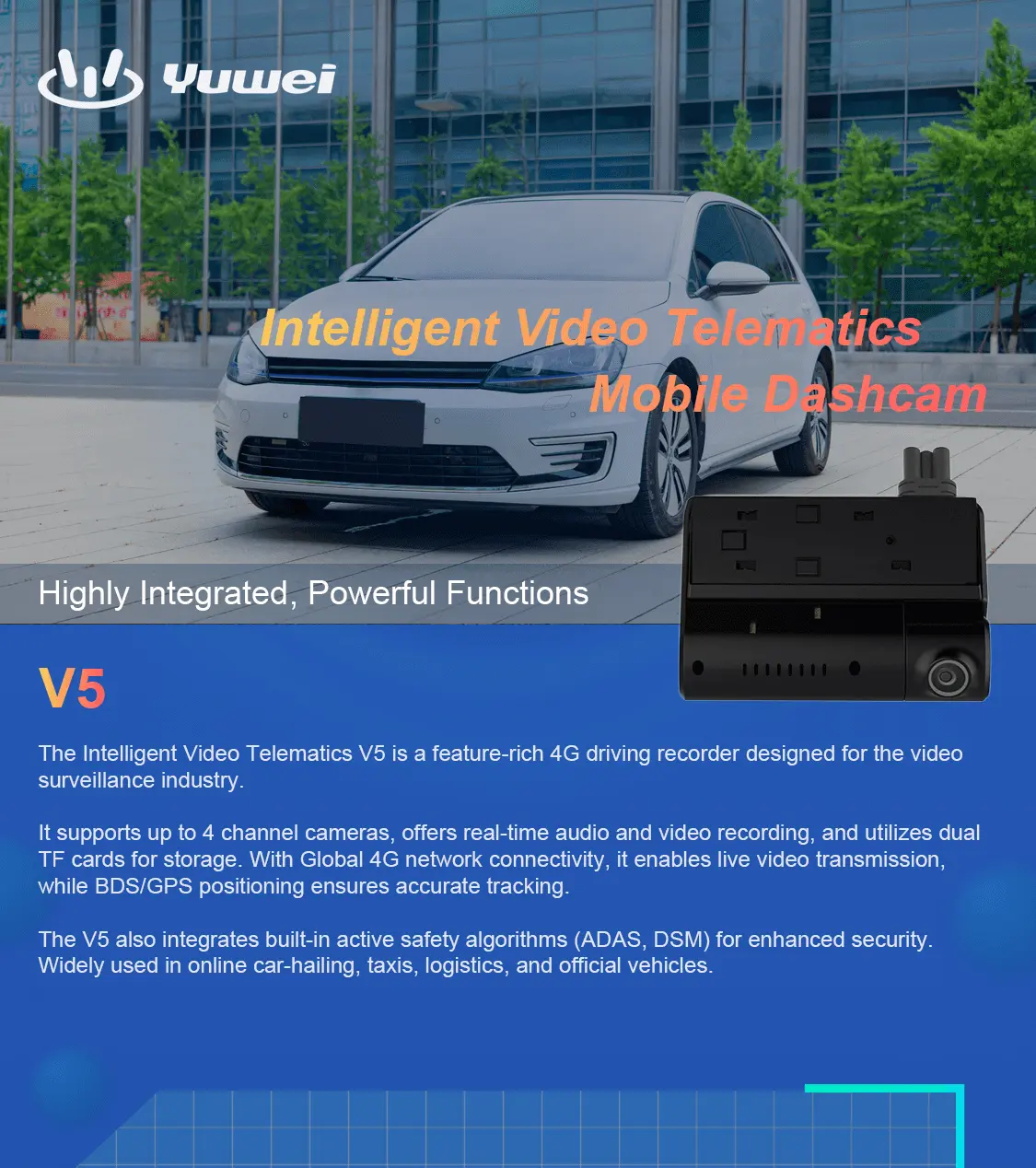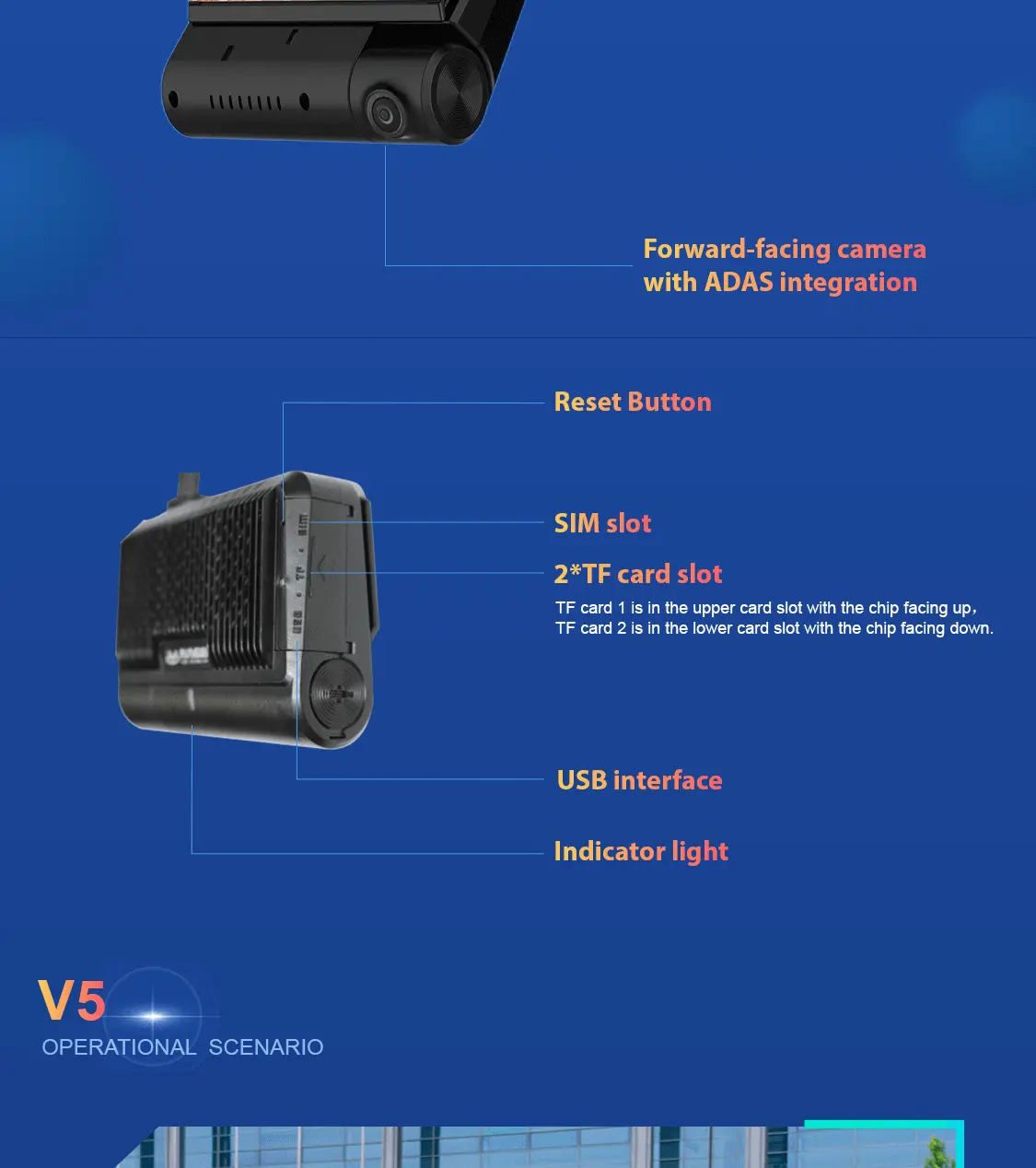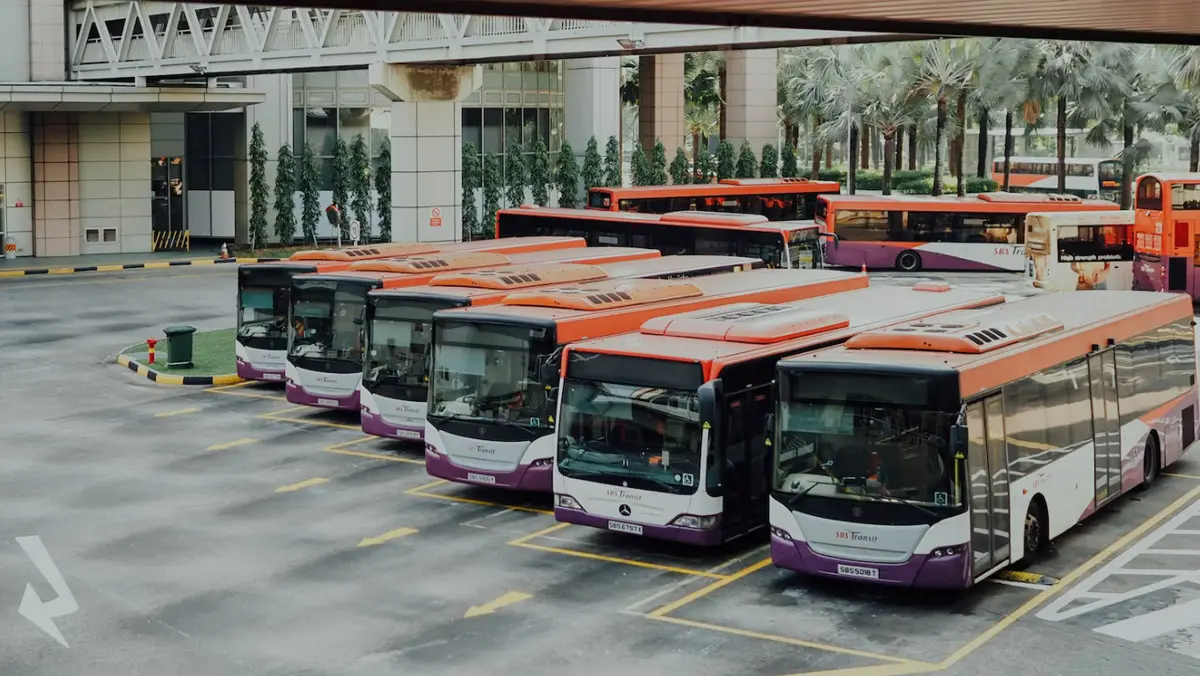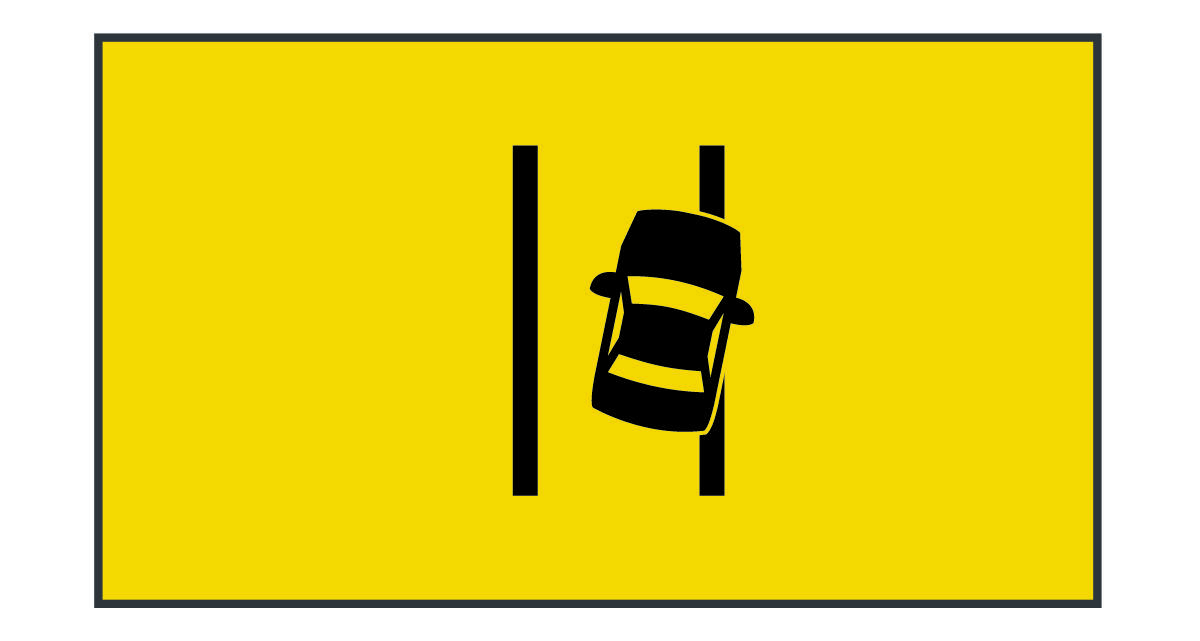Best 2 Channel Dash Camera
Best 2 Channel Dash Cam
YUWEI's V5 is the premier 2-channel dash cam, supporting 1080P full HD video recording of the road ahead with a 136° field of view and providing a complete view of the vehicle interior. It also supports the connection of two additional 1080P cameras for professional fleet management via a dedicated Mobile DVR.

2 CH dash cam features:
● Built-in 4G/WIFI/GPS/BDS
● Wide-angle view covering both the front of the vehicle and the complete interior
● High-performance H.264 video encoding
● Supports 2*SD card storage (up to 256GB)
● Compatible with Windows/iOS/Android CMS platforms
CHINA YUWEI welcomes all OEM/ODM projects. For inquiries, please email us at hello@yuweitek.com.
Dash Cam Specifications
Parameter classification | Parameter item | Details |
Basic parameters | Appearance | device integrate with ADAS cam |
Product Type | 4G DVR Car Video Terminal | |
network standard | 4G Global Band | |
Memory | 256MB(Flash)+1GB(DDR) | |
Front camera | 1080P, MIPI Camera, H:112°V:55° | |
In-car camera | AHD 720P, with light sensor/infrared night vision, | |
DSM camera | AHD Camera, single pass, infrared night vision, H=60° V=42° | |
4th Channel camera | AHD 720P | |
Hardware function
| GPS | Support: GPS+BDS |
Wi-Fi | 802.11b/g/n | |
trumpet | 8 ohms 1.5 watts, 1 channel, with sound cavity | |
MIC | Built-in dual silicon microphone design | |
Accelerometer | 3-axis accelerometer | |
Interface | micro 5Pin USB | USB×1, data interface |
BMW connector | Power+/GND ACC Left turning signal cable Right turning signal cable SOS Cable (Panic button) | |
RS232 | 1*RS232 | |
SIM card holder | Micro SIM | |
TF card holder | TF×2 (Card 1 and Card 2 support circular storage) | |
Power supply | Power supply | 12V/24V power supply |
Button& Indicator light
| Reset button | Long press the power button for 8 seconds to reset |
indicator light | 2-color indicator | |
Alarm key | Standard emergency alarm connector | |
Antenna
| GPS Antenna | Built-in ceramic antenna |
4G antenna | Built-in FPC+IPEX transposon | |
WIFI antenna | Built-in FPC+IPEX transposon | |
Memory card | 4G~2TB, patented DXR streaming storage format | |
Electrical Specification | Operating temp. | -20℃~70℃ |
Storage temp. | -40℃~85℃ | |
Static Protection | 6KV contact, 10KV air | |
Vibration test | Car vibration | |
Current consumption | When the working voltage is 12V, the current is from 500mA to 1A (depending on whether the algorithm is turned on, etc.) When ACC OFF: ≤3mA | |
Other quality requirements | According to JT/T794 standard (including hard test, soft test, reliability, quality, etc.) | |
Product specification pictures:


l Red light
Equipment situation | Light status |
Before the program is ready | Solid on |
during upgrade | On for 1 second, off for 4 seconds |
update completed | |
camera lost | On for 0.1 seconds, off for 0.1 seconds, flashing 4 times at a time, flashing once every 4 seconds |
SIM card missed | On for 1 second, off for 1 second |
other status | Always off |
l Green light
Equipment situation | light status |
Before the program is ready | Solid on |
during upgrade | On for 1 second, off for 4 seconds |
update completed | |
The card is recording normally | On for 1 second, off for 1 second |
Unrecorded card abnormal | On for 0.1 seconds, off for 0.1 seconds, flashing 4 times at a time, flashing once every 4 seconds |
other status | Always bright |
TF card/SIM card/USB location

Professional Fleet Management
The dash cam offers real-time remote monitoring, GPS positioning, blind spot detection, and uploads alarm information to a remote fleet management platform.
Dual Lens 2-Channel Recording
Dual lens cameras support simultaneous recording of 2 channels of 1080p video. The front-facing camera has a wide 136-degree field of view, capturing the road ahead without blind spots, while the interior camera provides comprehensive coverage of the vehicle interior.
Loop Recording
The dash cam supports loop recording, continuously recording video segments onto the SD card. When the storage capacity is reached, it automatically overwrites the oldest recordings with the newest ones, ensuring uninterrupted recording without the need for manual deletion. Additionally, when the dash cam detects emergency braking or collisions, it protects the footage from being overwritten during loop recording.





Advanced 4-Channel Dash Cam
The dash cam comes equipped with a built-in front-facing camera and a driver-side camera. It also supports the additional connection of two 1080P HD cameras, ensuring full video recording of the road ahead, the interior, and side blind spots."

















































